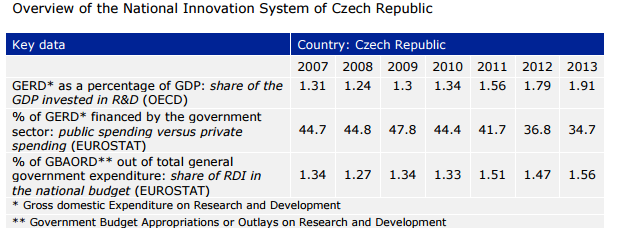
European Commission publishes results of study on effectiveness of EU rules on state aid for research, development and innovation.
The study evaluates and assesses the appropriateness and effectiveness of the regulatory framework for State aid to RDI in the European Union. It compares the competitiveness of RDI in the EU with that of certain competitor third countries to recommend improvements to the Community regulatory framework.
European countries progress at different speeds and on different levels. Northern Europe continues to be strong. With Sweden, Finland and Denmark, there is also the United Kingdom, the Netherlands and Ireland that have robust institutions and cohesive societies. They have well-developed infrastructures, skilled labour forces, open economies with dynamic financial markets, and sophisticated business and academic communities involved in research, patenting, and creativity and welldeveloped medium- and high-tech sectors. Other economies in Western Europe have constant strengths in all domains. This is the case of Luxembourg, Germany, Belgium, Austria, and France that are top performer countries. Southern countries have in general poor performances. Malta, Spain and Slovenia are the best-ranked countries among southern countries, while Portugal, Italy, Croatia and Greece have poorer performances. In Eastern Europe, the Czech Republic and Hungary do relatively well. Some eastern countries are currently making strong efforts in order to improve their situation: business and total R&D expenditures are increasing in Bulgaria, Hungary, and Slovenia.
As for the Czech Republiv, whilst the vast majority of the budget is distributed via transversal measures (77%), the sectoral distribution of the budget mostly prioritises the sectors of services (25.46%), ICT (22.44%) and high-tech manufacturing (13.83%). The main beneficiaries are non-profit and public RDI performers (58.55% of the budget), while SMEs receive 29.56% of the funding, the report says.
The Czech Republic is among countries that, according to the report, have a larger emphasis on absorptive capacity and on transfer capacity. Therefore, the share allocated to creative capacity is lower than in the total sample. Concerning the type of funding, they prioritise diffusion of technology framework. Countries in this group under-invest in indirect support measures compared to the total sample.
A share of 81% of the budget is allocated at national level (and therefore 19% at regional level). This illustrates a stronger focus on the regional level compared to the total. Finally, this cluster is characterised by slightly more emphasis on agriculture.
The Czech Republic is among countries highlighted as medium performers for the conditions and below average for the procedure and resources.
Read more.

